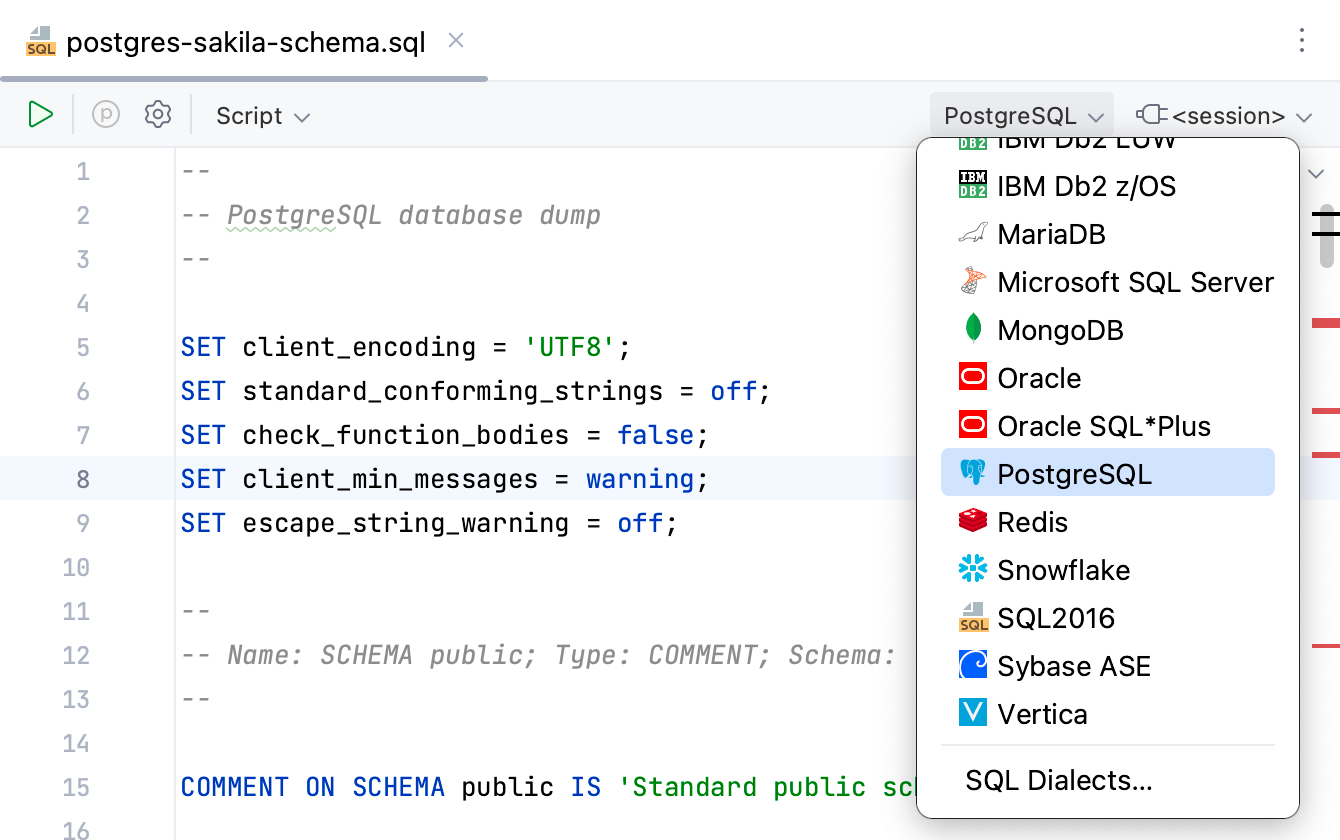User files
User files are the files that are stored on your machine or any other place you have access to. In RubyMine, they are available to work with in the Project tool window .
You can view, edit, create, and delete the SQL files.
Create an SQL file
In the Project tool window ( ) , right-click the directory in which you want to create an SQL file and select .
In the New File dialog, specify the filename with the SQL extension.
Run SQL files
SQL files are run against the selected databases or schemas using run configurations. To run an SQL file, you can either create a new run configuration, or edit an existing one.
For information about how to run an SQL files from your machine, see Run SQL files.
Configure a dialect for SQL files
For better coding assistance, assign an SQL dialect to an SQL file. An SQL dialect is a DBMS-specific version of SQL.
RubyMine lets you specify the SQL dialect for an individual file or all SQL and DDL files that can be stored in a directory, in your project, or on your computer.
Specify a dialect for a single SQL file
Click the dialect list, which is in the upper-right corner of the window.
Select a dialect from the dialect list.

Specify a dialect for multiple SQL files
Open settings by pressing Control+Alt+S and navigate to .
Click the Add button
and select directories or files for which you want to change a dialect.
Click Open.
Click the SQL Dialect cell and select the necessary dialect.
Apply changes and click OK.
Images
View images in RubyMine
In the Project tool window ( ) , find and select the image file.
Alternatively, position the caret at the reference to the image in the editor and press Control+B.
To preview an image in a popup instead of in a separate tab, select the reference to it and press Control+Shift+I.
View images in an external editor
In the Project tool window ( ) , right-click the image file and select .
Alternatively, press Command Alt F4.
RubyMine opens the image in the editor that is used in your OS by default. You can configure another image editor in which the IDE will open files.
Change the default external editor
Right-click an image in the editor and select Edit Path to External Editor from the context menu.
You can also press Control+Shift+A and type
Edit Path to External Editor.In the Path to External Editor dialog, specify the path to the application in which you want to open images and click Save.

Toolbar and context menu actions
Action | Description |
|---|---|
Show Chessboard | Select this checkbox to have transparent pieces of images shown as a chessboard. |
Show Grid | Select this checkbox to have a grid displayed when reviewing image files. |
Zoom In | Click the zoom the image in. |
Zoom Out | Click the zoom the image out. |
Actual Size | Click to view the image in its actual size. |
Fit Zoom To Window | Click to make large images fit the window size. |
Show Color Picker | Open the Color Picker dialog. |